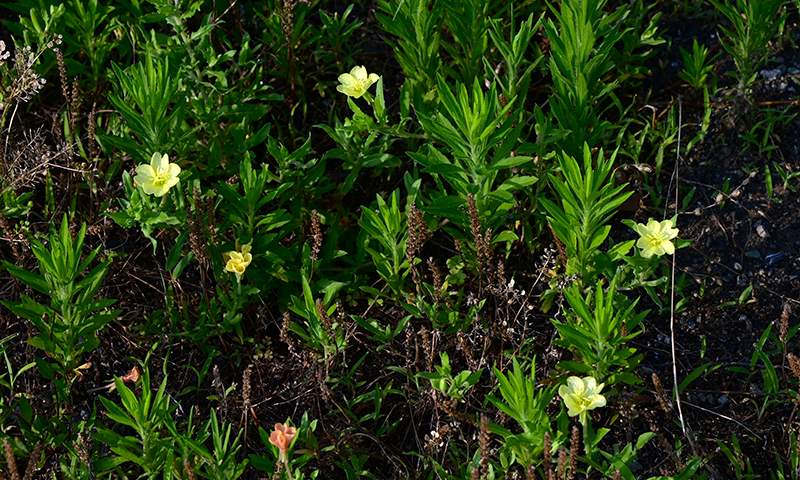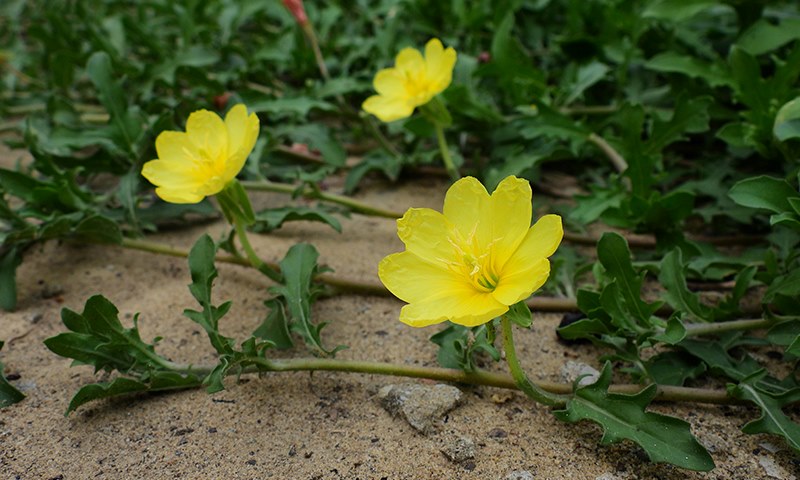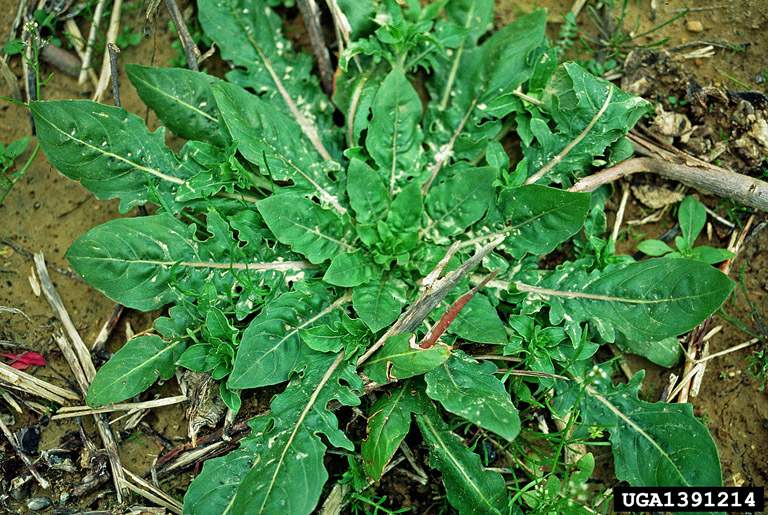HOW TO IDENTIFY EVENING PRIMROSE
Evening primrose gets its name from its flowers, which open at night and close in the morning.
This biennial plant can sometimes look very different during its first year versus its second. In its first year, the weed's leaves grow close to the ground in the shape of a basal rosette. As the plant matures, its stems lengthen and develop flowers. These light green stems, which can grow up to 2 feet in length, may stand upright, but they also frequently creep along the ground.
Another identifying feature is the plant's hairy leaves, which are about two inches long. The leaves have deeply toothed, rounded lobes and white veins in the middle
The evening primrose's flowers are usually small and pale yellow, though they may sometimes appear white or pink. Each blossom grows individually on single stalks, not in clusters, and has four heart-shaped petals, eight stamens in the center, and one pistil.
After flowering, the plant produces curved, capsule-shaped pods that grow upward. Inside are tiny, pitted seeds.
Tip: The cutleaf evening primrose is easy to mistake for the common evening primrose (Oenothera biennis) since the flowers look similar. You can tell the plants apart because the common primrose's leaves have smoother edges, and it grows more upright.
WHERE AND WHY EVENING PRIMROSE GROWS
The cutleaf evening primrose can be found across most of the United States, primarily east of the Rocky Mountains. However, it can also be found to the west. It grows in disturbed ground, such as fields, roadsides, along railroads or in waste areas. Lawns with thick, dense, well-maintained grasses are less likely to see the cutleaf weed.
The plant prefers sandy or limestone soil that's well-drained, and it can tolerate dry conditions quite well. Its flowers bloom from late spring to mid-summer, and it spreads by reseeding itself. The primrose's seeds are hardy and can last for years in the ground. Each plant can produce hundreds of seeds.
When this weed sprouts up in vegetable crops, it can be very competitive with the plants you want to grow. In addition, it can attract pests and diseases, making it extra problematic for gardeners.
HOW TO CONTROL EVENING PRIMROSE
Before applying herbicides to evening primrose or any other weeds, always read the product label carefully to confirm your lawn's grass type is listed. Certain grasses can be sensitive to particular herbicides, so it's important to double-check the labels before use. Also, keep in mind that herbicides should only be applied to well-established lawns, not freshly seeded areas.
Image Herbicides offer highly effective liquid products to kill or control evening primrose:
- Image Herbicides Nutsedge Killer for Southern Lawns Ready-to-Spray is a selective, post-emergent, water-based formula that kills tough weeds in established listed southern turfgrasses. To use, just attach the ready-to-spray container to a garden hose. It mixes for you as you spray. It's absorbed by the roots and then translocated throughout the weed.
- Image Herbicides Nutsedge Killer for Southern Lawns Concentrate is designed for use with a pump-style sprayer. It can be used on large areas or spot treatments. This formula kills tough weeds in established listed southern turfgrasses by absorbing into the weed's roots, where it's then translocated throughout the weed.
Evening Primrose Control Tip: While this plant can be pulled by hand, once it develops a thicker tap root, it can be tougher to fully remove. Herbicides are a better choice for full control.
Always read product labels thoroughly and follow instructions, including guidelines for lawn grasses, frequency of applications and seasonal maximums that may apply.
EVENING PRIMROSE GALLERY

Cutleaf Evening Primrose Growing Tall

Evening Primrose Flower and Stems Growing Close to the Ground

Evening Primrose Flower Closeup

Younger Rosette-Shaped Cutleaf Evening Primrose

Patch of Cutleaf Evening Primrose

Evening Primrose Stem Growing Upright, Closeup



